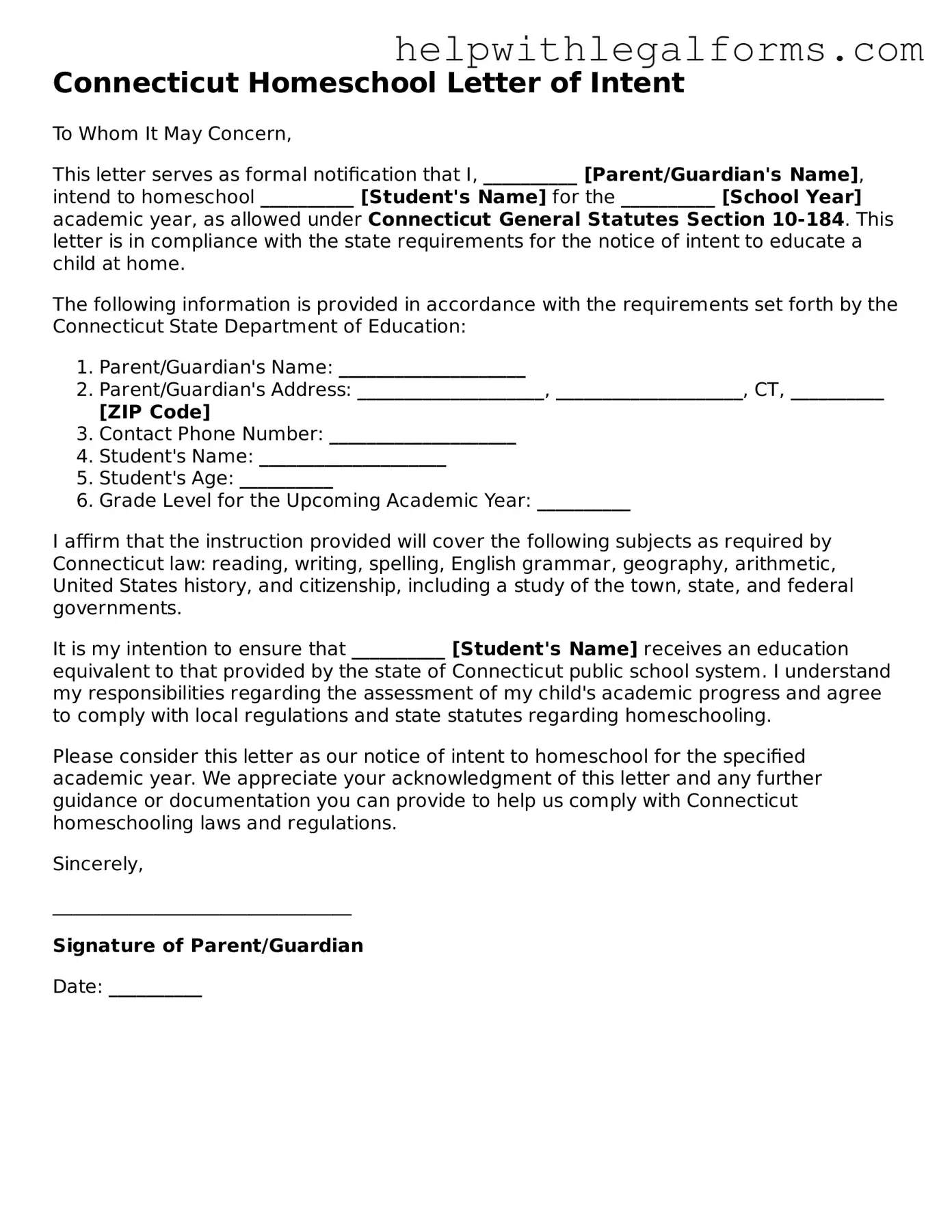Connecticut Homeschool Letter of Intent
To Whom It May Concern,
This letter serves as formal notification that I, __________ [Parent/Guardian's Name], intend to homeschool __________ [Student's Name] for the __________ [School Year] academic year, as allowed under Connecticut General Statutes Section 10-184. This letter is in compliance with the state requirements for the notice of intent to educate a child at home.
The following information is provided in accordance with the requirements set forth by the Connecticut State Department of Education:
- Parent/Guardian's Name: ____________________
- Parent/Guardian's Address: ____________________, ____________________, CT, __________ [ZIP Code]
- Contact Phone Number: ____________________
- Student's Name: ____________________
- Student's Age: __________
- Grade Level for the Upcoming Academic Year: __________
I affirm that the instruction provided will cover the following subjects as required by Connecticut law: reading, writing, spelling, English grammar, geography, arithmetic, United States history, and citizenship, including a study of the town, state, and federal governments.
It is my intention to ensure that __________ [Student's Name] receives an education equivalent to that provided by the state of Connecticut public school system. I understand my responsibilities regarding the assessment of my child's academic progress and agree to comply with local regulations and state statutes regarding homeschooling.
Please consider this letter as our notice of intent to homeschool for the specified academic year. We appreciate your acknowledgment of this letter and any further guidance or documentation you can provide to help us comply with Connecticut homeschooling laws and regulations.
Sincerely,
________________________________
Signature of Parent/Guardian
Date: __________
